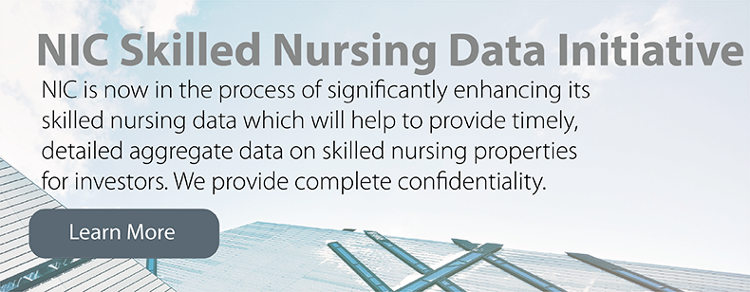Shining the Light on Skilled Nursing

Skilled nursing hasn’t escaped the sweeping changes affecting how health care is delivered and paid for in this country. But unlike the rest of the seniors housing and care industry, which has experienced a significant surge of capital, skilled nursing has received less investment dollars—even though the sector demonstrates a need, as it’s been affected by the policy and regulatory changes in recent years.
For several years, NIC has been studying this sector and the challenges facing it. The Skilled Nursing Data Initiative is part of our continued commitment to bring transparency to the industry and examine what skilled nursing needs to produce successful outcomes. Bill Kauffman, NIC’s senior research analyst, recently shared his perspective on this new initiative.
Why do you think less capital has been targeted at skilled nursing?
Bill: Investors need timely and relevant data to make decisions, and that just hasn’t been available. CMS is the primary provider of the data, and it’s typically outdated by the time investors get it—anywhere from 12 to 18 months old. Skilled nursing is a dynamic, rapidly changing market. We know that investors need up-to-date data that’s reported on a consistent, reliable basis so they can make good investment decisions.
Not only do investors need timely and accurate data, they need relevant data. Another big consideration is the shift from fee-for-service Medicare and Medicaid to the managed care payment system. Both operators and investors alike need to understand this shift. As part of the Skilled Nursing Data Initiative, we track and break out managed Medicare to help operators and investors identify the trends.
What is the Skilled Nursing Data Initiative currently tracking?
Bill: Right now, we’re collecting monthly data from 18 skilled nursing operators who have a total of 1,500 properties. We also have commitments for participation from other operators for an additional 500 properties.
Participating operators submit data monthly to NIC so we can compute the following metrics:
- Occupancy
- Skilled mix
- Quality mix
- Average Daily Rate (ADR) by payor class
- Patient day mix
- Overall revenue trends
Just as with other NIC initiatives, the individual property data we collect is kept confidential, and we never disclose any operator data. Data will be reported on an aggregate basis. NIC has numerous safeguards in place to protect the confidentiality and integrity of data including an internal SEC compliance policy and regular antitrust reviews.
Do operators receive anything for their participation in the initiative?
Bill: We’re giving operators who contribute this data an aggregate monthly summary of the latest national data and a benchmark comparison of their data to national aggregate statistics. This summary and benchmark are provided free of charge. The data reported includes all the metrics we compute from the data—occupancy, skilled mix, quality mix, ADR by payor class, patient day mix, and overall revenue trends.
We’ll be able to provide operators more enhanced geographic data as we grow our database and add more contributors.
What do you see is the end goal of the Skilled Nursing Data Initiative?
Bill: The average age of skilled nursing properties in the top 99 metropolitan markets is 36 years. Many of the buildings are facing challenges to stay relevant with the current transformation. Our goal with this initiative is to increase transparency into the sector with relevant, timely data so that skilled nursing is in a better position to attract new funding for much-needed building and technology improvements.

